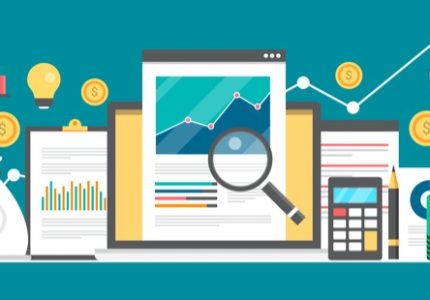Historical Evolution of Business Technology
The historical evolution of business technology reflects a continuous journey of innovation and adaptation that has transformed the way companies operate. From early manual record-keeping methods to advanced digital systems, technological advancements have played a crucial role in increasing efficiency, improving communication, and enabling global connectivity. Understanding this progression offers valuable insights into how businesses have evolved over time and how technology continues to shape their future developments.
Early Computing Devices and Their Impact
The historical evolution of business technology showcases a remarkable journey from simple mechanical tools to sophisticated digital systems that revolutionize modern commerce. Early computing devices marked the beginning of this transformation, laying the groundwork for more advanced technological innovations. These devices, such as the abacus and mechanical calculators, enabled businesses to perform basic calculations more efficiently, significantly impacting inventory management, accounting, and data processing. With the advent of electronic computers in the mid-20th century, businesses gained the ability to handle complex data and automate routine tasks, boosting productivity and decision-making accuracy. The development of mainframe computers, and later personal computers, further expanded operational capabilities, facilitating large-scale data analysis and communication. The impact of these early computing devices on business was profound, as they increased efficiency, reduced human error, and paved the way for contemporary digital infrastructures that continue to drive innovation and competitiveness in global markets. Today, understanding this evolution helps contextualize the rapid technological advances that shape business strategies and operations in the digital age.
Transition to Digital Systems in Business
The historical evolution of business technology has been marked by significant milestones that have transformed the way companies operate and compete. From the early use of manual record-keeping and simple tools, businesses gradually adopted more complex machinery and automation methods. The introduction of the printing press facilitated better communication and dissemination of information, which boosted business activities. During the 20th century, the rise of computers revolutionized data processing, enabling faster and more accurate management of business information. This era also saw the development of enterprise resource planning systems and customer relationship management tools, enhancing efficiency and customer engagement.
Transition to digital systems in business represented a pivotal shift from traditional, paper-based processes to highly integrated, electronic platforms. This transition was driven by advancements in information technology, internet connectivity, and cloud computing, allowing businesses to operate more flexibly and globally. Digital systems have empowered organizations to automate workflows, analyze vast amounts of data in real time, and improve decision-making processes. The ongoing evolution continues to reshape industries, fostering innovation, reducing costs, and increasing competitiveness in the digital age.
Emergence of Enterprise Resource Planning (ERP) Systems
The historical evolution of business technology has been marked by continuous innovation aimed at improving efficiency, accuracy, and decision-making processes within organizations. From the early days of manual record-keeping and the use of punch cards, technological advancements have transformed how businesses operate and manage resources.
In the mid-20th century, the advent of mainframe computers allowed companies to automate complex calculations and data processing tasks. This period saw the emergence of computer-integrated manufacturing and early management information systems, laying the groundwork for more sophisticated technological solutions.
The advent of personal computers in the 1980s significantly democratized technology, enabling smaller organizations to adopt computer-based management tools. During this era, departmental systems such as accounting, human resources, and supply chain management began to develop independently.
The emergence of Enterprise Resource Planning (ERP) systems in the 1990s marked a pivotal point in business technology. ERP systems integrated various business functions into a unified platform, facilitating seamless information flow across departments. This integration enhanced productivity, improved data accuracy, and enabled real-time decision-making, thus transforming the landscape of enterprise management.
Today, ERP systems continue to evolve with the inclusion of cloud computing, artificial intelligence, and IoT integration, further optimizing business processes and enabling organizations to adapt swiftly to changing market demands. The historical evolution of business technology reflects a continual quest for efficiency and agility, with ERP systems playing a central role in this progression.
Core Components of Modern Business Technology
Modern business technology relies on a set of core components that enhance efficiency, communication, and data management. These technological building blocks enable companies to operate smoothly in a competitive landscape. Understanding these key components is essential for leveraging technology effectively and driving business success in today’s digital age.
Information Technology Infrastructure
Modern business technology relies on a robust information technology infrastructure that supports the daily operations, strategic initiatives, and overall growth of organizations. Core components of this infrastructure include hardware such as servers, computers, and networking devices, which form the physical foundation of the technology environment. Software applications and systems enable businesses to automate processes, manage data, and facilitate communication across various departments. Networking technologies, including local area networks (LANs), wide area networks (WANs), and the internet, connect different systems and enable seamless data transfer and collaboration. Data storage solutions, such as cloud services and data centers, ensure secure, scalable, and accessible information management. Additionally, cybersecurity measures are integral to protect sensitive data and maintain operational integrity. Together, these components create an interconnected, efficient, and secure technological environment vital for modern business success.
Software Applications and Platforms

Modern business technology is built upon essential components that enable organizations to operate efficiently and stay competitive. Core components include hardware infrastructure such as servers, networking equipment, and storage systems that support daily operations. Software applications are pivotal, encompassing enterprise resource planning (ERP), customer relationship management (CRM), and productivity tools like office suites, which facilitate business processes and communication. Platforms such as cloud computing services, data analytics, and collaboration tools provide scalable, flexible solutions that enhance decision-making and innovation. Together, these components form a robust technological foundation that drives business growth and resilience in a dynamic digital landscape.
Data Management and Storage Solutions
Modern business technology relies on a combination of core components that enable efficient operations, data management, and secure storage solutions. These components are essential for supporting the dynamic needs of organizations in today’s digital landscape.
- Cloud Computing Infrastructure: Enables scalable and on-demand access to computing resources and applications over the internet.
- Data Management Systems: Includes database management systems (DBMS), data warehouses, and data lakes that organize and maintain vast amounts of business data.
- Cybersecurity Solutions: Protects sensitive information and safeguards systems from cyber threats through firewalls, encryption, and intrusion detection systems.
- Network Connectivity: Ensures reliable and fast communication channels via LAN, WAN, and VPN technologies, supporting seamless data flow.
- Enterprise Software Applications: Encompasses ERP, CRM, and other solutions that streamline business processes and improve efficiency.
- Storage Hardware and Technologies: Incorporates SANs, NAS devices, and solid-state drives for reliable and high-speed data storage.
- Data Backup and Recovery: Implements systems for data backup, disaster recovery, and business continuity planning to prevent data loss.
- Data Governance and Compliance: Ensures data quality, security, and compliance with regulations such as GDPR and HIPAA.
- Artificial Intelligence and Analytics: Leverages AI tools and analytics platforms to derive insights and support decision-making.
- Automation Tools: Uses automation software to streamline repetitive tasks and increase operational efficiency.
- Integration Platforms: Connect disparate systems and facilitate data sharing across different business units and applications.
Technological Innovations Driving Business Transformation
Technological innovations are fundamentally reshaping the landscape of modern businesses, enabling them to operate more efficiently, reach wider audiences, and innovate at an unprecedented pace. As digital transformation accelerates, companies across industries are leveraging emerging technologies such as artificial intelligence, cloud computing, and data analytics to stay competitive and drive growth. Understanding the background of business technology is essential to appreciate how these innovations are fueling transformative change in today’s dynamic marketplace.
Cloud Computing and Virtualization
Technological innovations have become a cornerstone of business transformation, enabling companies to operate more efficiently, innovate rapidly, and stay competitive in a dynamic marketplace. Cloud computing and virtualization are at the forefront of these advancements, revolutionizing how organizations deploy, manage, and scale their IT resources. Cloud computing offers flexible, on-demand access to computing power, storage, and applications, reducing the need for significant upfront investments and enhancing agility. Virtualization allows multiple virtual instances to run on a single physical server, optimizing resource utilization and simplifying IT management. Together, these technologies empower businesses to accelerate digital transformation, improve operational efficiency, and foster innovation in a rapidly evolving digital landscape.
Artificial Intelligence and Machine Learning

Technological innovations are fundamentally reshaping the landscape of modern business, enabling organizations to operate more efficiently, innovatively, and competitively. Among these advancements, Artificial Intelligence (AI) and Machine Learning (ML) stand out as key drivers of digital transformation, allowing businesses to harness data for strategic decision-making and automation.
AI and ML facilitate the development of intelligent systems that can analyze large volumes of data, identify patterns, and generate actionable insights in real-time. This capability helps companies optimize processes, personalize customer experiences, and develop new products and services to meet evolving market demands.
By integrating AI and ML into their operations, businesses can automate routine tasks, reduce operational costs, and increase accuracy and speed. For example, chatbots enhance customer service, predictive analytics improve forecasting, and recommendation engines drive sales. These innovations are central to creating agile organizations capable of adapting swiftly to technological and market changes.
Overall, the continual evolution of AI and ML technologies propels business transformation, fostering a future where data-driven decision making and automation become standard components of corporate strategy. Embracing these innovations is essential for companies aiming to maintain a competitive edge in the fast-paced digital economy.
Big Data Analytics
Technological innovations are fundamentally reshaping the landscape of business, enabling organizations to achieve greater efficiency, agility, and competitive advantage. Among these advancements, big data analytics stands out as a powerful tool that unlocks valuable insights from vast and complex data sets. By harnessing big data, businesses can identify emerging trends, personalize customer experiences, optimize operations, and make informed decisions swiftly. The integration of innovative technologies such as artificial intelligence, machine learning, and cloud computing further accelerates digital transformation, fostering a data-driven culture that drives growth and innovation across industries.
Security and Ethical Considerations
In the realm of business technology, ensuring security and adhering to ethical standards are essential for building trust and safeguarding sensitive information. As companies increasingly rely on digital tools and data-driven solutions, understanding the importance of cybersecurity measures and ethical practices becomes crucial. These considerations help organizations protect their assets, maintain compliance, and foster responsible innovation in a competitive environment.
Cybersecurity Strategies
In the realm of business technology, addressing security and ethical considerations is essential to protect sensitive data and maintain stakeholder trust. Implementing robust cybersecurity strategies ensures the integrity, confidentiality, and availability of digital assets while adhering to ethical standards promotes responsible innovation and compliance with regulations.
- Develop and enforce comprehensive security policies that outline best practices for employees and stakeholders.
- Utilize multi-layered defense mechanisms such as firewalls, intrusion detection systems, and encryption to safeguard information.
- Conduct regular security audits and vulnerability assessments to identify and address potential threats proactively.
- Educate employees on cybersecurity awareness to prevent social engineering attacks and promote a security-conscious culture.
- Ensure ethical handling of data by complying with privacy laws and respecting user rights, fostering transparency and trust.
- Implement incident response plans to efficiently manage and recover from security breaches or cyberattacks.
- Stay updated with emerging cybersecurity trends and threats, adapting strategies accordingly to maintain resilience.
Privacy and Data Protection Regulations
In the realm of business technology, ensuring security and adhering to ethical standards are paramount to maintaining stakeholder trust and safeguarding sensitive information. Organizations must implement robust security measures, such as encryption, access controls, and regular audits, to protect against cyber threats and data breaches. Ethical considerations also involve responsible use of technology, transparency with customers, and avoiding practices that could harm individuals or violate societal norms.
Privacy and data protection regulations play a crucial role in shaping business technology strategies. Laws such as the General Data Protection Regulation and the California Consumer Privacy Act enforce strict guidelines on how businesses collect, store, and process personal data. Compliance with these regulations helps organizations mitigate legal risks, prevent data leaks, and uphold the rights of individuals to control their personal information. Ultimately, integrating security and ethical practices into business technology fosters trust, enhances reputation, and ensures sustainable growth in a digital landscape.
Ethical Use of Emerging Technologies
In the realm of business technology, ensuring security and adhering to ethical standards are paramount to fostering trust and safeguarding stakeholder interests. As emerging technologies such as artificial intelligence, machine learning, and biometric systems become more integrated into business operations, it is crucial to implement robust security measures to protect sensitive data from breaches and cyber threats. Equally important is the ethical use of these innovations, which involves maintaining transparency, respecting user privacy, and avoiding biases that could lead to unfair practices. Businesses must establish clear guidelines and compliance protocols to navigate the complex landscape of technological advancement responsibly, promoting sustainable growth while upholding moral responsibilities.
Future Trends in Business Technology
Understanding the evolving landscape of business technology is essential for staying competitive in today’s dynamic market. As innovations continue to reshape how companies operate, adopt new tools, and engage with customers, it becomes crucial to anticipate future trends that will influence business strategies. Exploring these emerging technologies offers valuable insights into the direction of industry development and the opportunities that lie ahead.
Internet of Things (IoT) Integration
Future trends in business technology are increasingly centered around the seamless integration of the Internet of Things (IoT), revolutionizing how companies operate and deliver value. As IoT devices become more sophisticated and interconnected, organizations can gather real-time data to optimize supply chains, enhance customer experiences, and improve decision-making processes. The proliferation of IoT will drive smarter automation, predictive analytics, and increased operational efficiency across various industries. Additionally, advances in edge computing will enable data processing closer to the source, reducing latency and bandwidth demands. Businesses that adopt IoT integration early will gain competitive advantages through enhanced agility, innovation, and personalized services in the evolving digital landscape.
Blockchain and Distributed Ledger Technologies
Future trends in business technology, particularly in blockchain and distributed ledger technologies (DLTs), are poised to revolutionize the way organizations operate and secure their transactions. As these technologies continue to mature, they are expected to enhance transparency, security, and efficiency across various sectors including finance, supply chain, healthcare, and more.
One significant trend is the widespread adoption of blockchain for secure and decentralized data management, reducing reliance on intermediaries and lowering transaction costs. Innovations like smart contracts will become more integrated into daily business operations, automating processes and ensuring compliance automatically.
Additionally, the development of interoperable blockchain networks will enable seamless communication between different platforms, fostering global collaboration and data sharing. This will facilitate more robust ecosystems where value and information can be transferred securely and instantly across borders.
Distributed ledger technologies are also expected to play a key role in advancing digital identity verification, enabling businesses to establish trustworthy interactions with clients and partners while safeguarding privacy. Moreover, enterprises will increasingly leverage these technologies for real-time auditing, fraud prevention, and improved supply chain traceability.
As regulatory frameworks evolve to accommodate these innovations, businesses will also benefit from clearer guidelines, encouraging more widespread adoption. Overall, the future of business technology with blockchain and DLTs promises to create more transparent, secure, and efficient operational landscapes, fueling growth and innovation in the coming years.
Automation and Robotics
Future trends in business technology, automation, and robotics are set to revolutionize the way companies operate, enhancing efficiency and driving innovation. Advancements in artificial intelligence and machine learning will enable more intelligent decision-making processes, reducing human error and increasing productivity. Automation will continue to streamline routine tasks across various industries, freeing up human resources for strategic and creative activities. Robotics will become more adaptable and sophisticated, supporting not only manufacturing but also sectors like healthcare, logistics, and customer service. As these technologies evolve, businesses will increasingly adopt integrated digital ecosystems, fostering seamless data sharing and real-time analytics. This transformation promises to deliver competitive advantages, cost savings, and improved customer experiences, shaping the future landscape of global commerce.
Digital Twins and Simulation Technologies
Future trends in business technology are poised to significantly transform how companies operate, innovate, and compete in a rapidly evolving digital landscape. Among these advancements, Digital Twins and Simulation Technologies stand out as revolutionary tools that enhance decision-making, optimize processes, and improve product development. Digital Twins, virtual replicas of physical assets or systems, enable real-time monitoring, predictive maintenance, and scenario testing, leading to increased efficiency and reduced downtime. Meanwhile, Simulation Technologies allow businesses to model complex environments and test various strategies without the risks and costs associated with real-world experimentation. Together, these technologies foster a more agile, data-driven approach, empowering organizations to anticipate challenges, innovate with confidence, and deliver superior value to their customers. As advancements continue, we can expect these tools to become more accessible, integrated into broader digital ecosystems, and pivotal in shaping the future of business operations globally.





